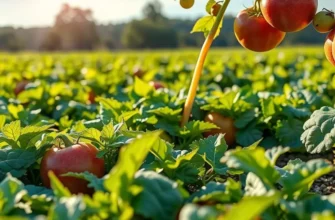Preserving fresh herbs through freezing is an excellent way to enjoy their vibrant flavors all year round. Not only does this method minimize food waste, but it also enhances your culinary capabilities by making herbs easily accessible. From the herbs you grow in your garden to the ones you buy from the store, effective freezing methods ensure freshness without sacrificing flavor. This guide provides straightforward techniques, tips, and best practices to help you store herbs safely and efficiently.
Preparing Herbs for Freezing

Preserving the vibrant flavors of your favorite herbs through freezing starts with meticulous preparation. Proper techniques ensure optimal taste retention and prevent the dreaded freezer burn. This chapter unfolds each step of the preparation process, focusing on washing, chopping, and blanching your herbs effectively.
Washing herbs thoroughly is your first step. It’s crucial to remove any dirt, pesticides, or insects that could compromise freshness. Submerge the herbs in a large bowl of cool water, swishing them gently to dislodge dirt. Lift them from the water rather than pouring out the bowl to leave any debris behind. Pat them dry with a clean towel or use a salad spinner to remove excess moisture. Dry herbs freeze better, as water can cause ice crystals to form, impacting texture.
Next, you must decide whether to chop your herbs before freezing. Whole leaves preserve maximum flavor but chopped herbs are more convenient for use straight from the freezer. Consider how you’ll use them most often. To chop, use a sharp knife to reduce bruising and preserve essential oils, which hold the flavor. Though some may prefer leaving softer herbs like basil whole to avoid browning, a quick chop might be ideal for sturdier herbs like rosemary.
Blanching, though not universally required, can be beneficial for certain herbs. The process involves briefly immersing herbs in boiling water then rapidly cooling them in ice water. Blanching inactivates enzymes that can cause flavor changes during freezing. It’s especially advantageous for robust herbs such as rosemary or thyme, which maintain their color and flavor better post-blanching.
To blanch, bring a pot of water to a boil and prepare an ice bath nearby. Place herbs in the boiling water for 15-30 seconds, then quickly transfer them to the ice bath. Once cooled, pat the herbs dry thoroughly. The excess moisture from blanching must be eliminated to prevent ice crystal formation.
Finally, portion the herbs into amounts you anticipate needing per use. Whether storing them in bulk or meticulously measured portions, use airtight containers or freezer bags to prevent air exposure, a prime culprit of freezer burn. Flatten bags to allow easier stacking and quicker thawing. If you’re interested in more sustainable kitchen storage solutions, explore eco-smart kitchen storage options to further enhance your preservation techniques.
Adhering to these meticulous preparation steps will maximize your herbs’ flavor and texture retention during freezing. Your foresight and care today pay off in brighter, more aromatic flavors when you need them most.
Effective Freezing Techniques

Freezing herbs is an efficient way to extend their shelf life, capturing their flavors at peak freshness. To avoid the frustration of freezer burn and loss of flavor, specific techniques have been developed that maintain the integrity of your herbs. Let’s explore the best methods to freeze your herbs and keep them vibrant.
One popular method involves using ice cube trays. This technique not only preserves herbs but also makes them easy to use in portions. Start by washing and drying your herbs thoroughly to remove any dirt or excess moisture. Chop the herbs finely, then place them into each compartment of the tray about halfway up. Fill the rest with water or olive oil, depending on the intended use. Olive oil works particularly well for herbs like basil, rosemary, and thyme, which are often used in sautés and sauces. Once frozen, transfer the herbal cubes into a labeled freezer bag for extended storage.
Another technique is vacuum sealing, which is particularly effective for preserving aroma and color. Wash and dry your herbs, removing excess stems, then freeze them briefly on a baking sheet. This prevents the herbs from sticking together during vacuum sealing. Once frozen, place the herbs into vacuum seal bags and use a vacuum sealer to extract the air. This method minimizes exposure to air, significantly reducing freezer burn.
For those without vacuum sealers, freezer bags offer a practical alternative. Start by washing and drying the herbs, then chop or leave whole according to preference. Lay them flat on a baking sheet and freeze briefly before placing them in a freezer bag. Remove as much air as possible either by hand or using a straw for suction. Flatten the bags for efficient storage and label with the herb name and date.
Avoiding freezer burn is crucial to maintaining your herbs’ quality. Make sure to use moisture-resistant, airtight packaging such as thick plastic freezer bags. Label each package with the date of storage, as herbs are best used within six months to a year for optimal flavor. To thwart freezer odor absorption, ensure the freezer is kept at a stable temperature below 0°F (-18°C) and clean your freezer regularly.
Storage guidelines serve as a valuable companion to freezing. Stack bags neatly to maximize space and organize by type for easy access. If using herb cubes, store them in the freezer door for quick retrieval. Regularly rotate your supply, placing the older herbs at the front to use first.
These techniques offer a sustainable approach to maintaining herbal freshness while reducing waste. Explore additional low-waste cooking strategies by visiting low-waste cooking prep, which complements the freezing methods discussed and ensures respectful use of your ingredients. Implementing these practices allows you to relish in the flavors of summer all year round without compromising on quality.
Final words
Freezing herbs is an excellent way to minimize food waste while elevating your culinary experience. By properly preparing and using effective freezing techniques, you can maintain the vibrant flavors and beneficial properties of your herbs long after their peak season. This practice not only contributes to sustainable kitchen management but also keeps your meals deliciously fresh. Embrace these methods and enjoy the convenience and versatility of herbs at your fingertips throughout the year. Don’t let your precious herbs go unused; freeze them and let their flavors shine in every dish.







